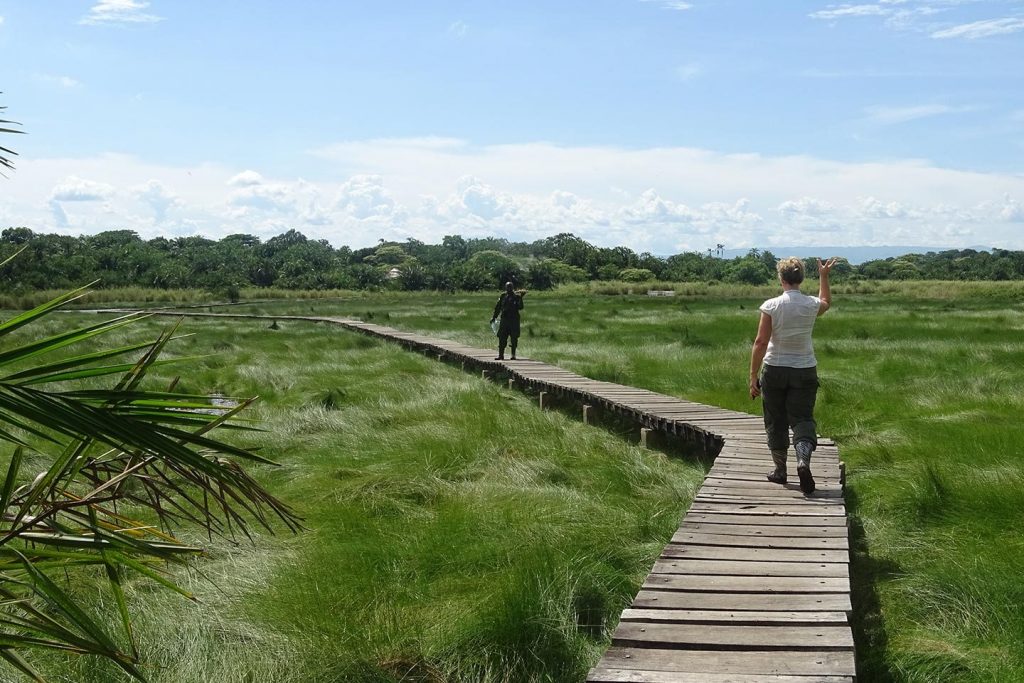Exploring the Rich Biodiversity of Semuliki National Park
Semuliki National Park, nestled in the southwestern corner of Uganda, is a true gem of biodiversity. With its diverse landscapes, ranging from tropical rainforests to savannahs, the park is a haven for a wide array of plant and animal species. In this article, we will delve into the intricate tapestry of life that thrives within the boundaries of Semuliki National Park.
Geography and Landscape:
Semuliki National Park covers an area of approximately 220 square kilometers and is part of the larger Ituri Forest, one of the most ancient and bio-diverse forests in Africa. The park is characterized by a variety of ecosystems, including lowland tropical rainforests, grasslands, and wetlands. The Semuliki River, which meanders through the park, adds to its unique geographical features.
Flora – Semuliki National Park Biodiversity
The park boasts an astonishing diversity of plant species, with estimates ranging from 400 to 500 tree species. The towering trees of the rainforest provide a dense canopy, creating a unique microclimate beneath. Some notable tree species include the Uganda ironwood (Cynometra alexandri) and the towering oil palms (Elaeis guineensis). The forest floor is adorned with a rich tapestry of ferns, orchids, and other understorey plants.
Hot Springs:
Sempaya Hot Springs: One of the unique features of Semuliki National Park is the Sempaya Hot Springs. These hot springs, known as the male and female springs, attract visitors with their bubbling pools and the opportunity to see the local communities using the hot springs for traditional healing rituals.
Birdlife:
Semuliki National Park is a birdwatcher’s paradise, with over 440 bird species recorded within its borders. The park is home to both Central African and West African bird species, making it a transitional zone for avian diversity. Bird enthusiasts can spot rare and endemic species such as the African piculet, Nkulengu rail, and the long-tailed hawk.
Mammals:
The park is inhabited by a variety of mammals, ranging from the elusive forest elephants to the agile primates swinging through the treetops. Semuliki is one of the few places in Uganda where visitors can encounter the iconic pygmy hippopotamus. Other notable mammals include forest buffaloes, leopards, and several monkey species, such as the red-tailed monkey and the black-and-white colobus monkey.
Primates:
Semuliki National Park is renowned for its diverse primate population. The park is home to eight different primate species, including the chimpanzee, Uganda mangabey, and blue monkey. The chimpanzees, in particular, are a major attraction for wildlife enthusiasts, as Semuliki offers a unique opportunity to observe these fascinating creatures in their natural habitat.
Reptiles and Amphibians:
The park is also home to a variety of reptiles and amphibians, adding to its overall biodiversity. Visitors may encounter colorful frogs, lizards, and snakes, including the elusive African rock python. The park’s wetlands provide habitat for various amphibians, contributing to the overall ecological balance.
Conservation Efforts:
Despite its ecological significance, Semuliki National Park faces threats from human activities, including deforestation, agriculture, and poaching. Conservation efforts are underway to mitigate these threats, including community-based initiatives, ranger patrols, and habitat restoration projects.
Conclusion / Remarks – Semuliki National Park Biodiversity
Semuliki National Park stands as a testament to the incredible biodiversity that Uganda has to offer. From the lush rainforests to the winding river and expansive grasslands, the park is a microcosm of life. As we continue to explore and understand this unique ecosystem, it becomes increasingly important to prioritize conservation efforts to ensure the continued survival of Semuliki’s rich biodiversity for future generations.








